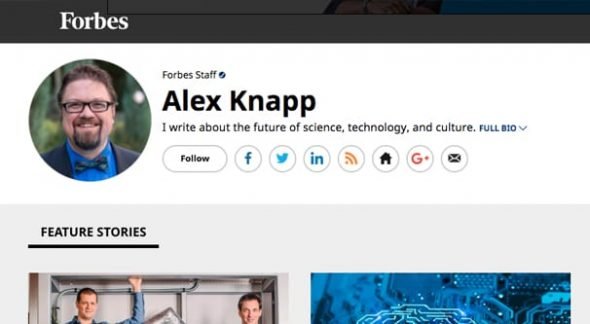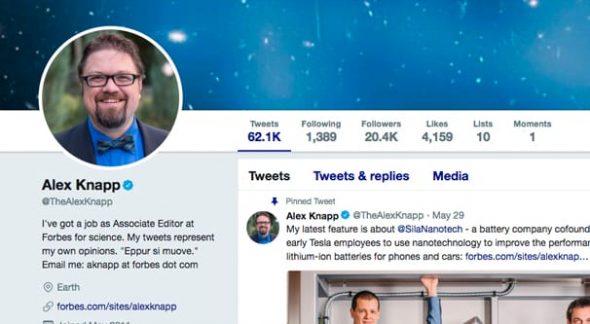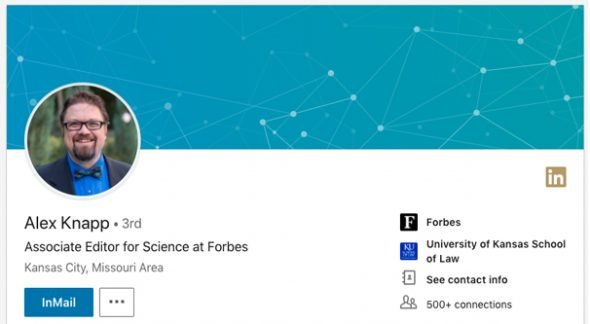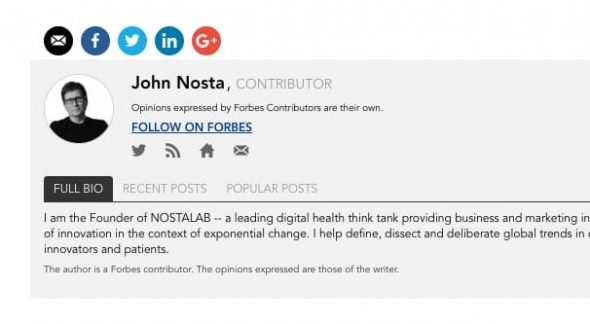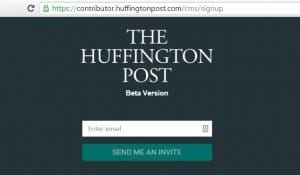“It’s not what you know, it’s who you know.” Time and again, we’ve all heard this advice, or something like it. The concept behind it is as true now as it was a thousand years ago. People are more willing to trust, do favors for, and otherwise appreciate one another when they know each other, rather than a stranger. If you were hiring for a job and you knew your friend was a good fit, but a stranger with similar qualifications applied, who would you go with? 99% of the time, you’d choose your friend.
It’s no different with guest posting. If you want to be published on large sites, sure, you can go through the hoops. Build up into a global-scale business and you’ll have people falling over themselves to offer opportunities. If you can’t build up to those heights, though, it’s often just easier to meet people and get in their good graces. It helps to have a man on the inside, after all.
If you want to meet someone who can get you a foot in the door, you need to get a foot in their door. Here’s how you can go about it.
Identify the Right People
Before you even pretend to begin this whole process, you need to figure out the right people to approach. Let’s say, for example, you want to get your content published on Forbes. You’re a small company making an innovative piece of software for hospitals. Which of these three people should you approach?
This is a tricky question! Alex is an associate editor covering science and tech. If your product is innovative enough, he might be able to help you out. Jeremy is equally well positioned; he a deputy editor for business news. If your business is sufficiently innovative and poised to disrupt the entrenched healthcare industry, he might want to hear your perspective.
Personally though, I might give Matthew a try. His profile on the site doesn’t mention it, but his LinkedIn does: he’s the head editor for health and pharmacy topics. Even if he doesn’t have the time to meet personally, he might be able to refer me to one of his sub-editors.
You have a bunch of different perspectives you can use to sell yourself to an editor. The trick is to know which perspective to use for which editor.
Pitch Guest Post Ideas
Since you’re on this site, you know I like to focus on guest posting, because it’s a way you can get value to your brand from other sites. I figure all of these tips are aimed at eventually becoming a contributor, so it’s important to reach the right people.
Forbes has their own contact methods, of course. Most sites do. However, you can often reach out directly to the head or deputy editors of the channels you find are the best fit for your content. If they have a method of contact published in their profile, on a social network, or in some other public venue, you can reach out to them directly.
If the end goal is to get a guest post published, why not just pitch one? The worst they can do is say no, and maybe you’ll actually get in. Just don’t be afraid of the possible rejection. If they say no, go ahead and move on, check out the rest of the tips I’ve covered below.
Say Hi on Twitter
Today is a modern age where communication is free and easy. Networking with one another is easier than ever with sites like Facebook, Twitter, and LinkedIn at your disposal. Now, Facebook is for friends and businesses. It’s not really the ideal place to go pitching a new friendship.
Twitter, though, is an excellent place. Look for the people you’re targeting and find them on Twitter. Check to see if they’re active. If they aren’t active, just stop; it does you no good to try to pitch an inactive account. If they’re active, go ahead and drop them a follow. They probably won’t follow you back unless they’re interested in you already; if they do, it’s a great opportunity to send them a message!
More realistically, you’re going to need to hang out and watch their content for a while. Retweet and like content that they produce that is interesting or relevant to you. Wait for a chance to link something they wrote to something you’re doing. For example, maybe they wrote a post about how healthcare is stagnating under the weight of ancient software. That’s your opportunity to send them a DM and say: “Hey, I saw your post about how healthcare software sucks. I’ve thought that for a while, so I made a company to produce a replacement! I think you’d be interested.” Along with, of course, a link.
The idea here is pretty simple; find an opportunity to mention who you are and what you’re doing, specifically in a context that is relevant to something they just recently did. While the topic is fresh on their minds, you have a way in. You can’t just drop yourself out of the blue, you’re a lot more liable to be ignored.
Respond to Relevant Interview Requests
Sometimes journalists will put out a call for interviews in a relevant industry. Keep an eye out for these kinds of posts, particularly on Twitter. You can even run searches for keywords along with phrases like “works in healthcare” or “if you know anyone” and the like. The usual tweet is something like “I’m looking to talk to people who work in X industry. If you know anyone, send them my way!”
You can also look into joining one of the many PR networks that exist. One of the better options, at least for some minimal exposure, is Help A Reporter Out. HARO, as it is otherwise called, is a site that hooks up business owners and entrepreneurs on one end with reporters on the other. Reporters want to write about a topic, so they put out a call looking for anyone relevant, and you answer.
This isn’t going to be a reliable method, not for a long shot. Not many reporters or blog editors actually make these kinds of calls, and even when they do, it’s not for a guest post opportunity. You’ll be mentioned and potentially quoted, but the important part is getting to chat with the editor in question. Get to know them a little beyond the professional interview, and you might be able to pick up that thread later.
Network on LinkedIn
Much like Twitter, LinkedIn is a site designed explicitly for connections in a professional sphere, and it can be a great place to connect with the editors you want to reach. You need to find those people, so you need to know who they are, and you definitely need to confirm they are who you want them to be. Don’t mix up more than one Matt Smith; it does you no good to connect with a plumber in Ontario instead of an editor at a newspaper.
LinkedIn does require approval of a connection, so it might be worthwhile to look for second or third-degree connections you can make first. It’s hard to just jump into someone’s orbit, but it’s a lot easier if you can do it in stages.
Like Twitter, you need to make sure the person is active on the site as well. LinkedIn makes it a little harder to determine activity, which is unfortunate, but some editors are going to be active with writing and linking to their content on the site. If you find them active, offer a connection request, and see where things go from there.
Ask Other Contributors for Hookups
If you want to be published on Forbes, you need the approval of an editor. If an editor is not responding to you, you need to get their attention. How can you do so? One great idea is to look for other contributors.
Many of the more regular contributors for a site like Forbes – or HuffPost, or Entrepreneur, or any other major publication – are people just like you, who managed to get their foot in the door. If you can present your own value to them, while not treading on their toes, maybe they can offer a recommendation or a private contact method.
The trick here is to find the right people and go through all of the above options, except maybe the HARO method, since they’re unlikely to be using HARO as regular contributors. They have their own areas of expertise. If you can find some angle to approach them, they can pass on your communication to their editor, and perhaps open up an opportunity for you.
Thankfully, it’s a lot easier to find contributors than it is to find editors. Just look at who is publishing content and cross-reference them with their social profiles. As a bonus, some of them might publish on several of your target platforms, which makes them an exceptionally potent connection to make.
Invite a Relevant Reporter to Interview
Sometimes, you will have an opportunity to make a connection proactively. If your company is about to debut a new product or service, if you’re about to publish a big piece of content, or if you were recently in the news for one reason or another, you might be able to reach out to your chosen writers or editors and offer to do an interview. It’s sort of like press release marketing, except without the impersonal press release.
This is another one where it helps if the editor in question is already covering the story, or similar stories. You’re essentially just tipping them off about your situation, and letting them decide if you’re worth approaching or not. In some cases, like on Forbes, you might even be able to use their general tip line email.
Stalk Them at Conventions
I consider this one something of a nuclear option, for a few reasons. First of all, it could come off as a little creepy, particularly if you’re catching someone out of their work persona. It’s one thing to find someone handing out business cards on a convention floor and say hi. It’s another thing entirely to recognize them having coffee after hours and try to shove yourself into their personal space.
The other reason it’s a nuclear option is the expense. After all, if you want to meet someone at a convention, you need to attend that convention. That means acquiring a pass or badge, paying for travel and lodging, and figuring out how your business operates without you. This can be rather costly for what amounts to a chance at a guest post.
If you’re interested, however, just keep an eye on the Twitter feeds of your editors of choice. Look for times when they mention that they’re attending a specific event, and make plans to attend as well. Once you’re there and the event is ongoing, shoot them a direct message and ask them to meet up. Depending on the situation, you could offer to get away from the convention center and go for coffee, or you could just ask to meet up wherever they are for a minute of their time.
Be Someone Worth Meeting
At the end of the day, none of this will work if you’re not someone worth meeting. If you’re too small of a business shooting for too high of a publication, you probably won’t be worth notice. If you’re outside of the industry they cover, or if you’re being too pushy, or you’re just disrespectful, you’ll be out of luck. Be respectful, be kind, and above all, be interesting.
 ContentPowered.com
ContentPowered.com

